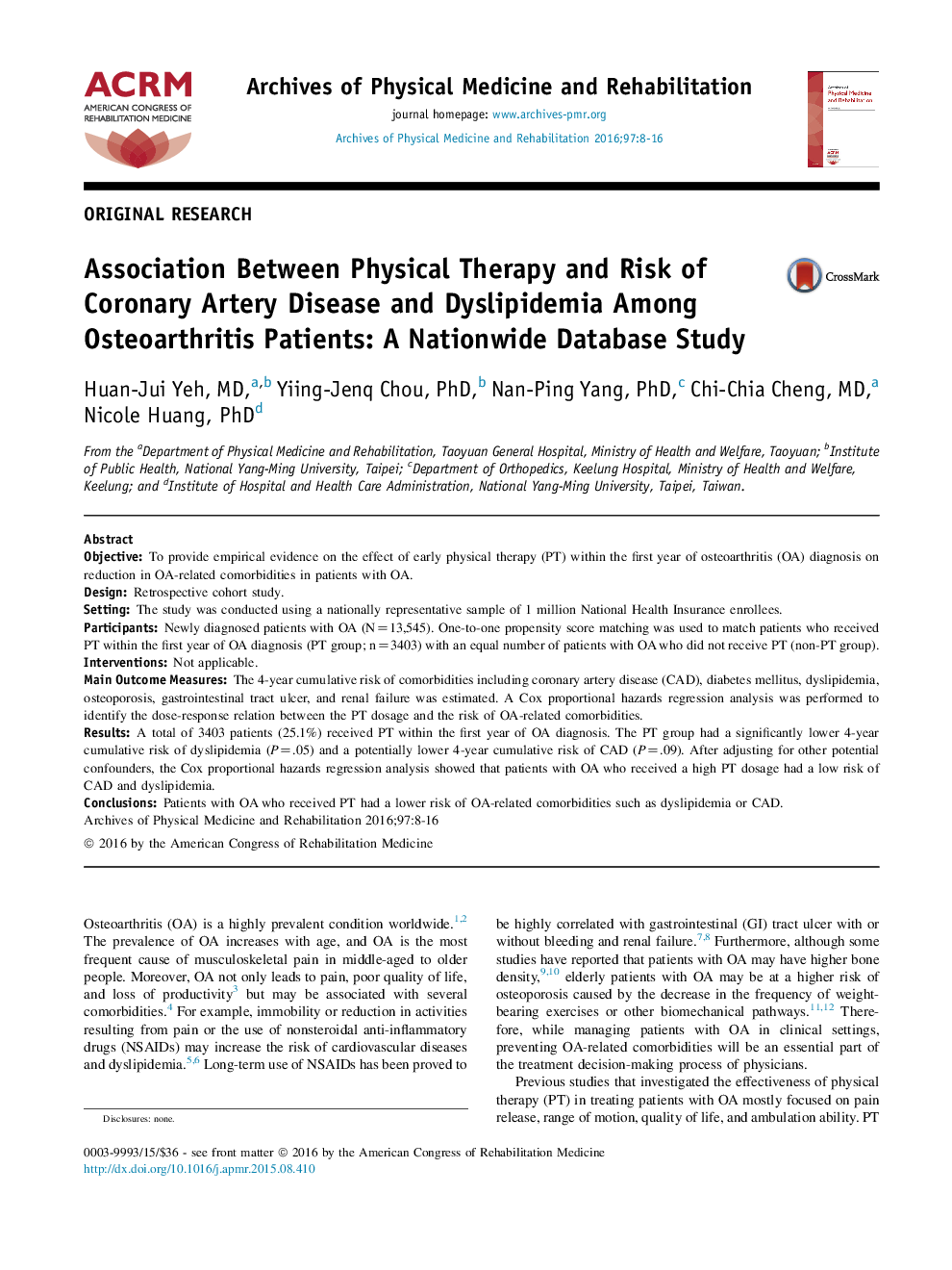| Article ID | Journal | Published Year | Pages | File Type |
|---|---|---|---|---|
| 3448011 | Archives of Physical Medicine and Rehabilitation | 2016 | 9 Pages |
ObjectiveTo provide empirical evidence on the effect of early physical therapy (PT) within the first year of osteoarthritis (OA) diagnosis on reduction in OA-related comorbidities in patients with OA.DesignRetrospective cohort study.SettingThe study was conducted using a nationally representative sample of 1 million National Health Insurance enrollees.ParticipantsNewly diagnosed patients with OA (N=13,545). One-to-one propensity score matching was used to match patients who received PT within the first year of OA diagnosis (PT group; n=3403) with an equal number of patients with OA who did not receive PT (non-PT group).InterventionsNot applicable.Main Outcome MeasuresThe 4-year cumulative risk of comorbidities including coronary artery disease (CAD), diabetes mellitus, dyslipidemia, osteoporosis, gastrointestinal tract ulcer, and renal failure was estimated. A Cox proportional hazards regression analysis was performed to identify the dose-response relation between the PT dosage and the risk of OA-related comorbidities.ResultsA total of 3403 patients (25.1%) received PT within the first year of OA diagnosis. The PT group had a significantly lower 4-year cumulative risk of dyslipidemia (P=.05) and a potentially lower 4-year cumulative risk of CAD (P=.09). After adjusting for other potential confounders, the Cox proportional hazards regression analysis showed that patients with OA who received a high PT dosage had a low risk of CAD and dyslipidemia.ConclusionsPatients with OA who received PT had a lower risk of OA-related comorbidities such as dyslipidemia or CAD.
